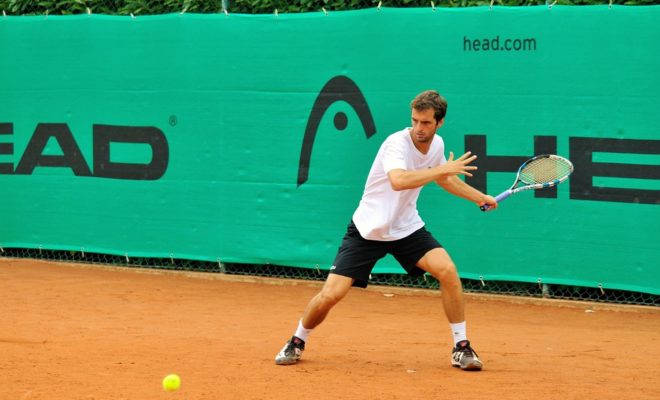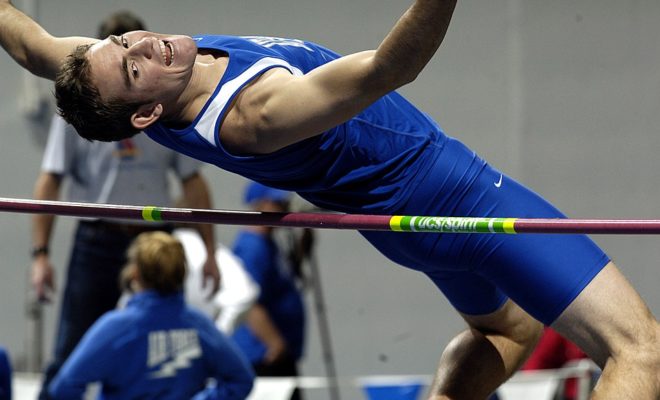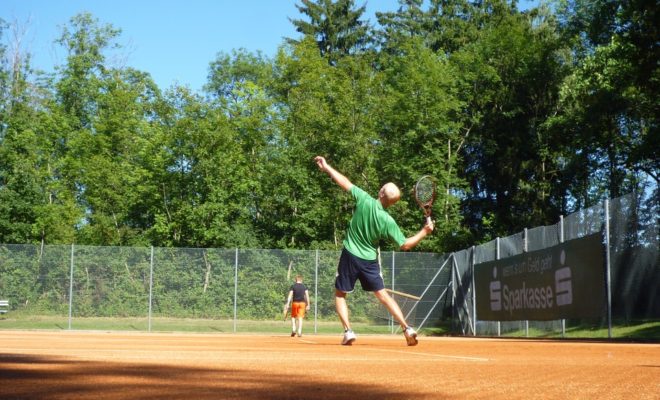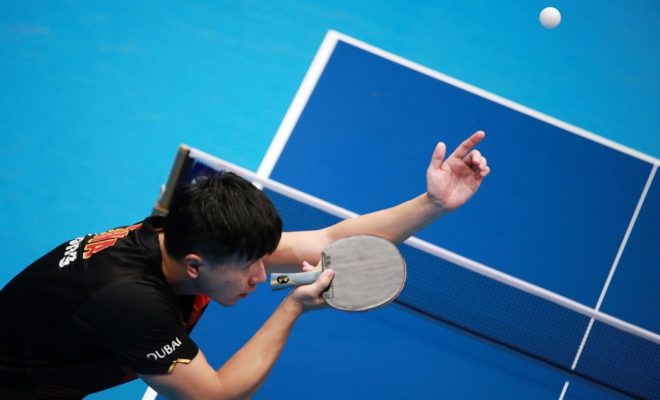CHOP, HALF VOLLEY, AND COURT POSITION.
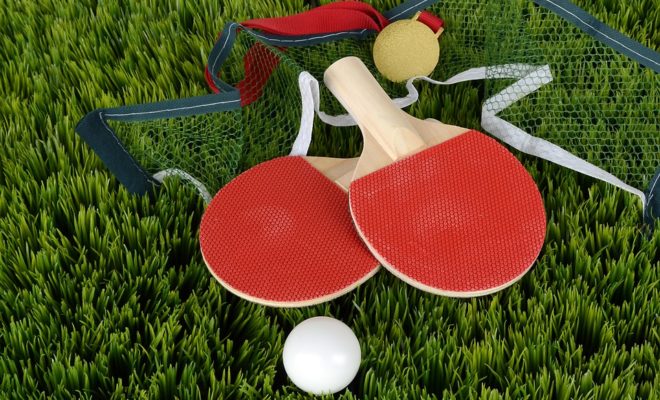
In Tennis, a slash stroke is a shot where the point towards the player and behind the racquet, made by the line of flight of the ball, and the racquet traversing it, is more prominent than 45 degrees and might be 90 degrees. The racquet confront passes somewhat outside the ball and down the side, hacking it, as a man cleaves wood. The turn and bend is from ideal to left. It is made with a firm wrist.
The cut shot only decreased the point said from 45 degrees down to a little one. The racquet confront passes either inside or outside the ball, as per bearing craved, while the stroke is fundamentally a wrist wind or slap. This slap grants a chose sliding break to the ball, while a slash “”drags”” the ball off the ground without break.
The guidelines of footwork for both these shots ought to be the same as the drive, but since both are made with a short swing and more wrist play, without the need of weight, the standards of footwork might be all the more securely disposed of and body position not all that painstakingly considered.
Both these shots are basically protective, and are work sparing gadgets when your rival is on the benchmark. A hack or cut is difficult to drive, and will separate any driving amusement.
It is not a shot to use against a volley, as it is too ease back to pass and too high to bring on any stress. It ought to be utilized to drop short, delicate shots at the feet of the net man as he comes in. Try not to endeavor to pass a net man with a cleave or cut, aside from through a major opening.
The drop-shot is a delicate, pointedly calculated cleave stroke, played completely with the wrist. It ought to drop inside 3 to 5 feet of the net to be of any utilization. The racquet confront goes around the outside of the ball and under it with an unmistakable “”wrist turn.”” Do not swing the racquet from the shoulder in making a drop shot. The drop shot has no connection to a stop-volley. The drop shot is all wrist. The stop-volley has no wrist by any means.
Utilize all your wrist shots, cleave, cut, and drop, only as an auxilliary to your conventional diversion. They are expected to annoy your adversary’s amusement through the changed turn on the ball.
The half volley
–
This shot requires more immaculate planning, visual perception, and racquet work than some other, since its edge of security is littlest and its complex odds of incidents countless.
It is a get. The ball meets the ground and racquet confront at almost a similar minute, the ball skipping off the ground, on the strings. This shot is a solid wrist, short swing, similar to a volley with no finish. The racquet confront goes along the ground with a slight tilt over the ball and towards the net, in this way holding the ball low; the shot, similar to all others in tennis, ought to traverse the racquet confront, along the short strings. The racquet face ought to dependably be marginally outside the ball.
The half volley is basically a protective stroke, since it ought to just be made if all else fails, when gotten out of position by your rival’s shot. It is a urgent endeavor to remove yourself from a perilous position without withdrawing. never purposely half volley.
Court position
–
A tennis court is 39 feet long from pattern to net. There are just two places in a tennis court that a tennis player ought to be to anticipate the ball.
1. Around 3 feet behind the pattern close to the center of the court, or
2. Around 6 to 8 feet once more from the net and practically inverse the ball.
The first is the place for all pattern players. The second is the net position.
In the event that you are drawn out of these positions by a shot which you should return, don’t stay at the point where you struck the ball, yet achieve one of the two positions said as quickly as could reasonably be expected.
The separation from the gauge to around 10, feet from the net might be considered as “”no-man’s-land”” or “”the clear.”” Never wait there, since a profound shot will get you at your feet. Subsequent to making your shot from the clear, as you should regularly do, withdraw behind the benchmark to anticipate the arrival, so you may again approach to meet the ball. In the event that you are attracted short and can’t withdraw securely, proceed with the distance to the net position.
Never stand and watch your shot, for to do as such basically implies you are out of position for your next stroke. Endeavor to achieve a position so that you generally land at the recognize the ball is going to before it really arrives. Do your hard running while the ball is noticeable all around, so you won’t be rushed in your stroke after it ricochets.
It is in figuring out how to do this that common suspicion assumes a major part. A few players instinctually know where the following return is going and take position in like manner, while others will never detect it. It is to the last class that I encourage court position, and prescribe continually rolling in from behind the standard to meet the ball, since it is much less demanding to keep running forward than back.
Should you be gotten at the net, with a short shot to your rival, don’t stop and let him pass you freely, as he can undoubtedly do. Choose the side where you think he will hit, and bounce to, it abruptly as he swings. On the off chance that you figure right, you win the point. On the off chance that you are incorrect, you are no more regrettable off, since he would have beaten you at any rate with his shot.
Your position ought to dependably endeavor to be to such an extent that you can cover the best conceivable territory of court without yielding security, since the straight shot is the surest, most perilous, and must be secured. It is just an issue of the amount more court than that promptly before the ball might be monitored.
An all around grounded learning of court position spares many focuses, to state nothing of much breath exhausted in long pursues sad shots.


